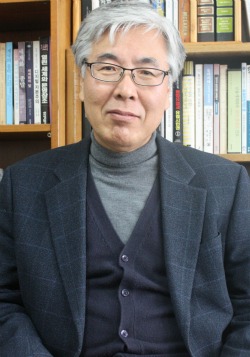학교폭력
Rethinking of the School Violence in Korea
By Kuk Min-ho, Professor, Dept. of Sociology


Recent school bullying-related suicides have become a big issue and authorities have proposed a set of measures to devise ways to stop bullying. Even the prime minister worried about school violence and vowed to take a zero-tolerance approach toward the perpetrators and make every efforts to better protect victims. The inaugural joint advisory committee of government officials, parents and experts on school bullying was held at the Education Ministry to discuss school violence. Some of the measures discussed by the committee included lowering the age of criminal responsibility from 14 to 12, making school transfers for bullies compulsory and even leaving school bullying records on student records to place them at a disadvantage in college admission. The highlight of the measure is to give teachers greater authority and more responsibility to deal with school violence. Violent students will be subject to tougher disciplinary as well as legal action. The focus was more on how to punish the bullying students more severely.
But school violence is not a matter to be dealt with only by punishment. Actually the government has proposed a variety of measures every time since school violence became a n issue in 1998, when the organized student gangs called "iljinhoi" made a high school freshman jump to death after being bullied. The government at that time came up with similar proposals to the recent school violence solutions. Among them were setting up a joint team of government officials, experts and parents to tackle school violence, campaigning to create safer environments for students and enforcing officials to patrol school areas. But it hasn't done much to resolve nor find out the causes of problem.
Many of the measures against school bullying ended up as just one-time measures. The society usually becomes oblivious to school bullying violence once the topic subsides. They have proved that a one-time measure cannot solve the problem. The idea of isolating the violent students and sending them to a separate school the way to blames just the students. If schools force the students to transfer to other institutions without a realistic alternative, it will just be a time bomb. Also it will create future gangs. It is not an advisable solution. Of course the above mentioned measures are indispensible. But they are still insufficient to eliminate violence from school. Few may expect the package to stop it once and for all. This indicates how difficult it is to make schools free of violence.
Here I argue that the solution of the bullying problem is not in the hands of the students and teachers themselves but of the society as a whole. The authorities should work together more closely with teachers, parents, lawyers, experts, and students in anti-bullying efforts. Teachers and parents are required to have more dialogue and consultations with students to understand their problems. Also, better parental care for children of single mothers or both working parents is pivotal to tackling the problem as those children easily feel isolated and lonesome and become bullies or join gangs. An educational reform to ease competition and relieve students from the severe stress of college entrance exams is necessary. Education in school should not be constrained to enhancing extreme competition for college entrance exam, but to cultivate well-balanced individuals to possess a mature relationship and high moral standards. School programs should be changed to concentrate more on educating children to become decent members of our society. Schools, parents, and the local community need a cooperation to create a strong community network to tackle school bullies that can work all the time, not to end up as a one-time measure.
국민호 사회학과 교수
tribune1968@cnumedia.com

